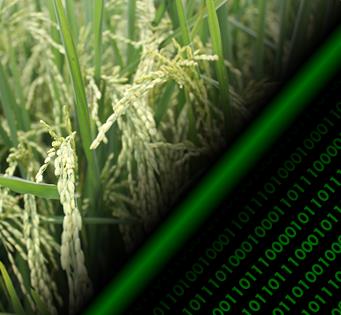Evaluation of CropSyst for simulating the yield of flooded rice in northern Italy.
 |
2005 - European Journal of Agronomy, 23, 315-326 |
 |
Confalonieri, R., Bocchi, S. |
Abstract:
Research on rice cropping systems carried out in Europe has to face the great variability of pedo-climatic conditions, and the linked abundance of cultivated varieties, characteristic of the high latitudes-temperate areas where rice is traditionally grown.
Dynamic simulation models can provide an useful tool for system analysis needed to improve the knowledge, the agronomic management and crop monitoring.
For calibrate and validate CropSyst (never used for rice), a process-based simulation model, for Indica-type and Japonica-type varieties, data obtained from five field experiments, carried out in Northern Italy between 1989 and 2002, were used.
Plants were sampled during the life cycle from rice plots of five cv Loto, Cripto, Ariete, Drago, Thaibonnet and Sillaro, maintained at potential production, to determine some important crop variables and parameters such as aboveground biomass (AGB), leaf area index, specific leaf area, harvest index, the date of the main phonological stages.
At the end of the calibration process to the parameters (the others were set to the default value, taken from the Literature or measured) optimum mean daily temperature for growth, specific leaf area (for Japonica varieties), stem/leaf partition coefficient (empirical), leaf duration, were assigned the following values: 28 and 27 ◦C respectively for Japonica and Indica varieties, 27 and 29.5m2 kg−1 respectively for Japonica early and medium-late varieties, 4.5, 3, 1.5 for Japonica early, medium-late and Indica varieties, 700, 850, 950 ◦C-days for the three groups of varieties.
The assessment of model performances has shown average RRMSEs of 20 and 22% at the end of calibration and for the validation process; the modelling efficiency is always positive and the coefficient of determination always very close to 1. General improvements will be achieved by the model by considering the thermal profile (strongly influenced by flooding water at mid latitudes) evolving in and over the canopy.
Dynamic simulation models can provide an useful tool for system analysis needed to improve the knowledge, the agronomic management and crop monitoring.
For calibrate and validate CropSyst (never used for rice), a process-based simulation model, for Indica-type and Japonica-type varieties, data obtained from five field experiments, carried out in Northern Italy between 1989 and 2002, were used.
Plants were sampled during the life cycle from rice plots of five cv Loto, Cripto, Ariete, Drago, Thaibonnet and Sillaro, maintained at potential production, to determine some important crop variables and parameters such as aboveground biomass (AGB), leaf area index, specific leaf area, harvest index, the date of the main phonological stages.
At the end of the calibration process to the parameters (the others were set to the default value, taken from the Literature or measured) optimum mean daily temperature for growth, specific leaf area (for Japonica varieties), stem/leaf partition coefficient (empirical), leaf duration, were assigned the following values: 28 and 27 ◦C respectively for Japonica and Indica varieties, 27 and 29.5m2 kg−1 respectively for Japonica early and medium-late varieties, 4.5, 3, 1.5 for Japonica early, medium-late and Indica varieties, 700, 850, 950 ◦C-days for the three groups of varieties.
The assessment of model performances has shown average RRMSEs of 20 and 22% at the end of calibration and for the validation process; the modelling efficiency is always positive and the coefficient of determination always very close to 1. General improvements will be achieved by the model by considering the thermal profile (strongly influenced by flooding water at mid latitudes) evolving in and over the canopy.
 |
Keywords: Oryza sativa L., simulation model, aboveground biomass |
 |
DOI: 10.1016/j.eja.2004.12.002 |
- Comparison of three calibration methods for modeling rice phenology
- A simple pipeline for the assessment of legacy soil datasets: An example and test with soil organic carbon from a highly variable area.
- A high-resolution, integrated system for rice yield forecasting at district level.
- Downscaling rice yield simulation at sub-field scale using remotely sensed LAI data.
- Analysis and modelling of processes involved with salt tolerance and rice.
- Estimating crop nutritional status using smart apps to support nitrogen fertilization. A case study on paddy rice.
- Development of generic crop models for simulation of multi-species plant communities in mown grasslands.
- Quantifying uncertainty due to stochastic weather generators in climate change impact studies
- Predicting rice blast disease: machine learning versus process-based models
- Boundaries and perspectives from a multi-model study on rice grain quality in Northern Italy.




